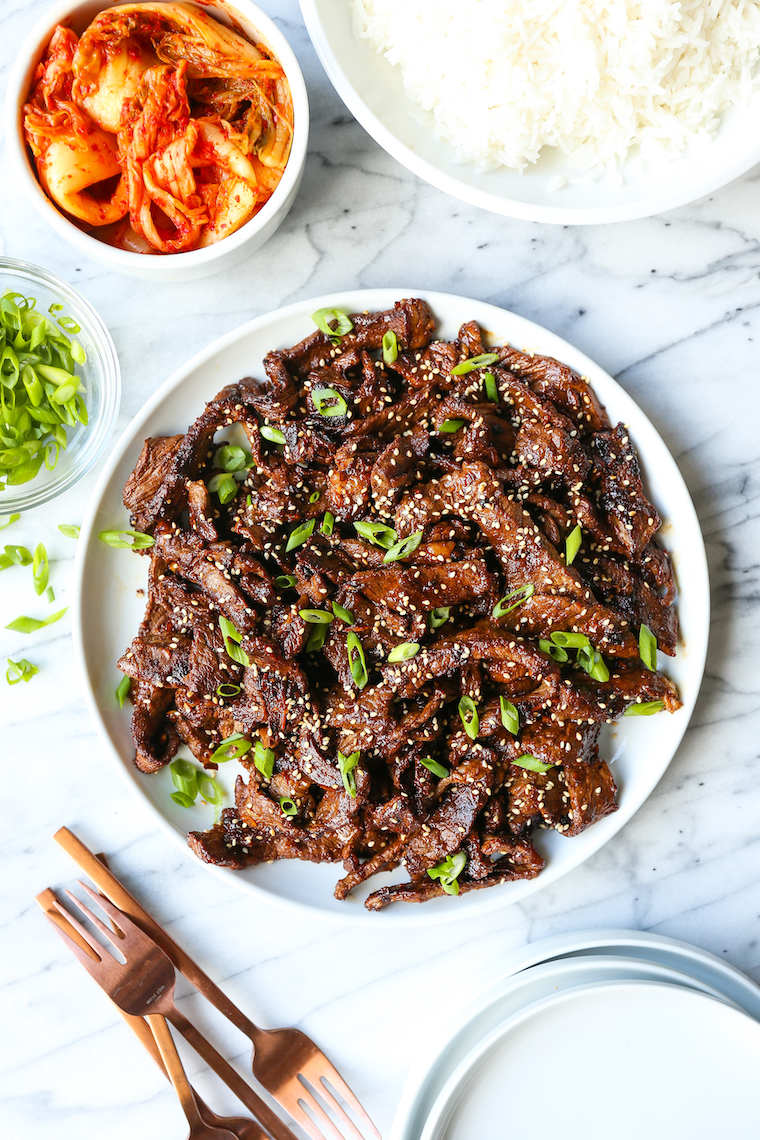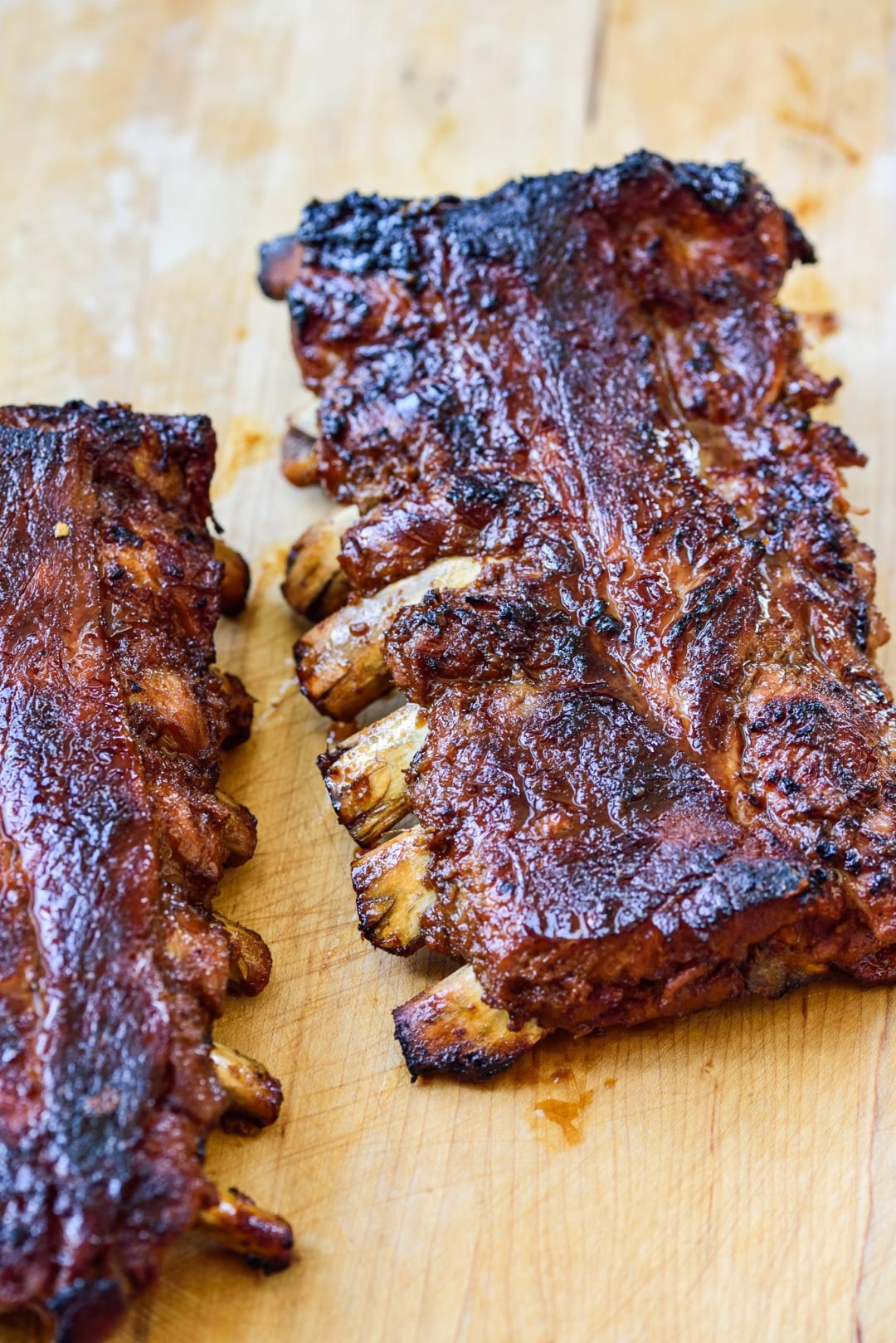Sweet, spicy, funky, and oozing with umami, it’s hard to describe the flavor of gochujang. It’s one of those ingredients that’s so complex, and that has such a special taste, that it’s difficult to compare it to anything else.
Gochujang is an indispensable part of the Korean pantry and is used throughout Korean cooking to flavor soups, marinate meats, and more.
If you aren’t familiar with gochujang, you’re in the right place. Read on to learn more about this superstar of the Korean pantry and how you can incorporate it into your cooking.

What is gochujang?
Gochujang is a Korean condiment made of crushed red chili flakes (Korean gochugaru), fermented soybeans, glutinous rice, and salt. Sometimes additional sweeteners are added.
It’s an absolutely essential part of the Korean pantry. It’s key to making so many Korean dishes. From army stew, to tteokbokki, to bibimbap, and more, the spicy Korean paste is always there.
The word gochujang is derived from gochu, or chili, and jang, or paste or sauce made from soybeans.
Gochujang is just one of many types of jangs used in Korean cooking. The term jang broadly refers to sauces or pastes that are made from fermented soybeans. Gochujang, in addition to doenjang (fermented soybean paste) and ganjang (soy sauce) make up the three most essential jangs of Korean cooking.
There are other jangs, such as eojang (fish sauce), ssamjang (a dipping sauce), and more.
Jangs in general have been made and used in Korea for centuries. The gochujang variety first appeared in Korea in the 16th or 17th century soon after the time chili peppers were introduced to the country.
Traditionally, the spicy paste was made at home by a years-long process of fermenting the ingredients in earthenware jars called jangdoks.
Today, gochujang is made by factories and the vast majority of Koreans simply purchase it at grocery stores.
Sunchang County in North Jeolla is the most well-known region for the paste. Its version is regarded as being the highest quality. There’s even an annual festival, Sunchang Gochujang Festival, held there to celebrate this ingredient.
What does gochujang taste like?
Gochujang has a deep flavor brimming with umami. It’s also sweet, spicy, funky, and a bit pungent. The flavor is difficult to describe. It’s unique and hard to compare to anything else.
The flavors of umami and funkiness are achieved through the fermenting process and by the soybeans.
The sweetness comes from the starch of glutinous rice that develops during the fermentation process.
And the spiciness comes from the chili flakes (or gochugaru).
Is gochujang spicy?
Spice levels vary depending on the specific gochujang you find. Some are mild and others can be quite spicy.
The amount of spiciness is often indicated on the package, with small fire icons showing the level of spiciness of that particular version of the paste.
Gochujang vs Gochugaru
To many not familiar with Korean cuisine, gochujang and gochugaru might seem to be the same thing. This confusion is likely because both ingredients start with the word gochu, which means chili pepper in Korean.
But they’re actually quite different ingredients and can’t be used interchangeably.
Gochujang is the fermented paste of soybeans, chili, and glutinous rice. On the other hand, gochugaru is simply red chili peppers that have been ground into chili flakes.
Gochugaru is one of the ingredients used to make gochujang.

How to use gochujang
This spicy paste has many uses in Korean cooking. It can be used as a base for stews and soups, as a marinade for meat, and in sauces. It’s also becoming more popular in the West and can be used to flavor typically Western recipes.
Bases for stews and soups
The spicy condiment is often used as a base for soups and stews. It’s usually mixed with other ingredients and added directly into the stock. It’s a quick and powerful way to get great complexity in a broth.
In Korean Army Stew, it’s mixed with dashi to create a spicy broth:

In Rose Tteokbokki, it’s mixed with cream, milk, and dashi:

Marinades for meat
Gochujang as a marinade adds foundational layers of depth to the meat before it’s cooked.
Gochujang is a key ingredient for marinating the beef in bulgogi:

It’s also used to marinate barbecued pork ribs:

Sauces
Gochujang is used as a sauce and can be eaten without being cooked.
In bibimbap, plain gochujang is added right on top of the rest of the ingredients:

It’s one of the key ingredients to ssamjang, a sauce that’s used to dip meat for Korean barbecue:

The paste can also be used to create a spicy mayo, like on these kimchi fries:

To flavor Western recipes
Adding it to tuna salad is surprisingly tasty:

It’s also great on vegetables, like roasted butternut squash:

Gochujang substitutes
Since the spicy paste has such a unique taste, it’s really difficult to find a good substitute.
A mixture of Japanese miso paste and gochugaru might be the closest approximation you can find. Miso, like gochujang, is made from fermented soybeans. So both has a similar flavor profile of umami and funkiness.
To make this substitute, mix one cup of miso paste with a half cup of gochugaru. If you don’t have gochugaru, you can add a few dashes of cayenne pepper and sweet paprika to the miso paste. Taste for spiciness and add more cayenne as needed.
How long does it last?
If stored properly in the refrigerator and sealed, it lasts for a long time. Like two years long.
Do I need to refrigerate it?
Yes, you should refrigerate it once open to maintain its freshness.
Can I freeze it?
Yes, you can freeze it. Though when stored in the refrigerator, it lasts for up to two years. Beacuse of its long shelf life in the fridge, freezing shouldn’t be necessary.

Where to buy gochujang?
The Korean paste is becoming popular in the United States. Many local grocery stores carry it in the Asian ingredient section.
If your local grocery store doesn’t carry it, you’ll be able to find it at Korean, Chinese, or Japanese markets.
And if you don’t have access to any of these markets, Amazon also sells it.

[…] Gochujang is a Korean condiment made of fermented soybeans, red chili, glutinous rice, and salt. […]